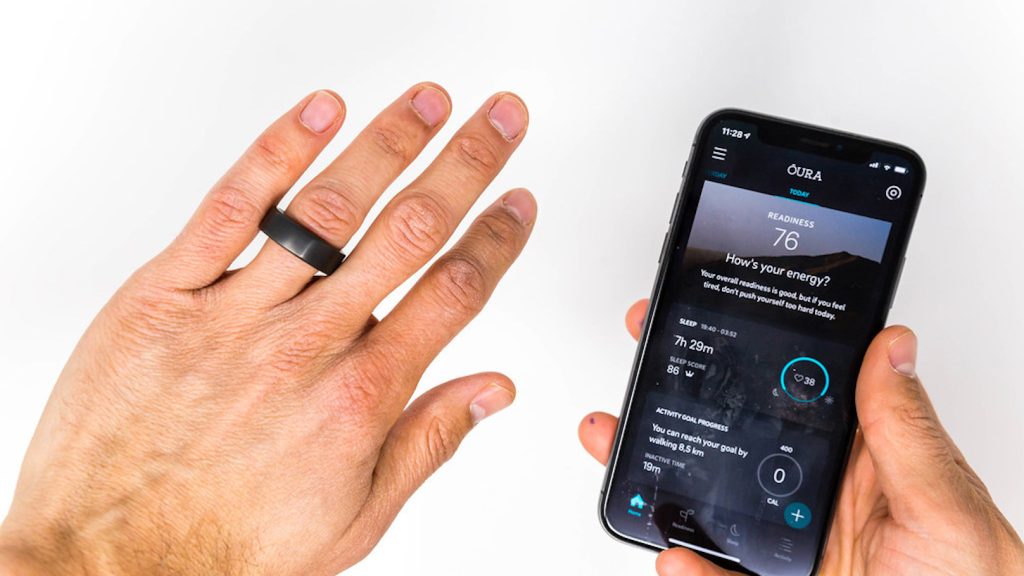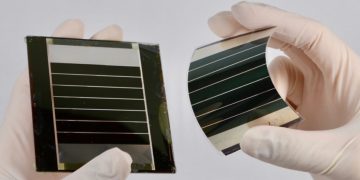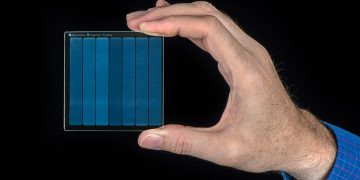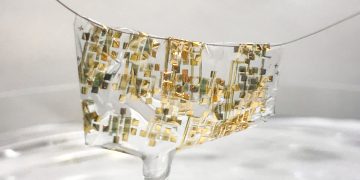Introduction: Wearable Tech’s Potential to Support Sustainable Lifestyles by Helping Individuals Monitor Their Health and Reduce Their Environmental Impact
The rapid evolution of wearable technology has transformed many aspects of daily life, making it easier to stay connected, track fitness, and monitor health metrics. Devices like smartwatches, fitness trackers, and health monitors are not just innovative gadgets; they are becoming an integral part of how we live, work, and take care of our well-being. But wearable tech is not just about convenience and personal health; it also holds significant potential to contribute to more sustainable living. From reducing carbon footprints to using eco-friendly materials, wearable technology could play a crucial role in minimizing environmental impact while promoting healthier lifestyles.
Sustainability is a growing concern across industries, with increasing pressure on businesses and consumers alike to reduce waste, energy consumption, and reliance on finite resources. Wearable tech, with its ability to track everything from steps and heart rate to sleep patterns and calories burned, has a unique position in supporting both personal health and environmental goals. As wearable devices become more integrated into our lives, they can help individuals make more conscious choices in terms of their energy use, lifestyle habits, and even their ecological footprint.
This article delves into the various ways wearable technology can contribute to a more sustainable lifestyle. We will explore how eco-friendly materials, energy-efficient designs, and health monitoring features can lead to more sustainable practices. However, despite their promise, wearables also come with challenges, including e-waste concerns, battery life limitations, and product longevity. This article will also examine these challenges and explore the ways in which wearable tech can evolve to meet sustainability goals.
Eco-Friendly Materials: How the Materials Used in Wearables Can Be Made More Sustainable
One of the significant factors in making wearable tech more sustainable is the materials used in their production. Traditionally, wearables have been made from a combination of plastics, metals, and glass, which may not be biodegradable or recyclable. The environmental impact of producing these materials, coupled with the fact that many wearables are designed with limited lifespan, means that their contribution to environmental waste can be considerable. However, with growing concern over sustainability, there is increasing pressure on manufacturers to rethink the materials they use in wearable technology.
- Recycled Materials: One way to reduce the environmental impact of wearables is to use recycled materials in their construction. By repurposing plastics, metals, and even electronic components, manufacturers can reduce the need for virgin resources and help cut down on waste. For example, companies like Garmin and Fitbit are already making strides by incorporating recycled plastic in their devices, reducing the demand for new raw materials. By utilizing recycled components, manufacturers can lower their carbon footprint and contribute to a circular economy.
- Biodegradable Plastics: Another solution to the issue of waste is the use of biodegradable plastics. As traditional plastics take hundreds of years to decompose, the use of biodegradable alternatives could significantly reduce the long-term environmental impact of wearable technology. These plastics break down naturally over time without leaving harmful pollutants behind, making them a more eco-friendly option for producing wearable devices. While still a developing technology, biodegradable plastics have the potential to become a viable option in the production of wearables, especially in components such as straps, casings, and packaging.
- Sustainable Fabric and Materials for Wearables: As wearable technology extends beyond gadgets like fitness trackers and smartwatches to include smart clothing and other forms of apparel, the materials used to create these devices will become even more important. Smart textiles, for example, are being developed using eco-friendly materials such as organic cotton, recycled fibers, and natural dyes. These fabrics, combined with embedded sensors or conductive threads, could lead to wearable devices that are both sustainable and functional. Brands like Levi’s and Adidas have already begun exploring ways to integrate wearable tech into clothing using sustainable, eco-conscious fabrics, which could set the stage for more widespread use of such materials in the future.
Energy-Efficiency: The Role of Low-Power Wearables in Reducing Energy Consumption Compared to Traditional Electronics
Wearable technology is uniquely positioned to be far more energy-efficient than many other consumer electronics. While traditional devices such as smartphones, laptops, and televisions require substantial power to operate, wearables typically have far lower energy demands. This makes them an ideal candidate for those looking to reduce their energy consumption and environmental footprint.
- Low-Power Consumption: Most wearable devices, such as fitness trackers, smartwatches, and health monitors, are designed to operate with low power. These devices are typically optimized for energy efficiency, allowing them to last for days or even weeks on a single charge. By using low-power components and focusing on conserving battery life, wearables consume far less energy than larger electronics. This not only reduces the overall environmental impact of using these devices but also decreases the demand for energy resources.
- Improved Battery Technologies: Battery life is one of the key considerations when it comes to energy efficiency in wearables. The development of longer-lasting, energy-efficient batteries can significantly reduce the frequency of charging and the environmental impact associated with battery disposal. Lithium-ion batteries, which are commonly used in wearables, have seen improvements in both lifespan and efficiency. Additionally, the development of more advanced technologies, such as graphene-based batteries, could further enhance the energy efficiency of wearable devices. Longer-lasting batteries mean that fewer devices will need to be discarded, contributing to the reduction of e-waste.
- Energy Harvesting: In addition to reducing energy consumption, wearable technology can also incorporate energy-harvesting technologies that generate power from the wearer’s movements. For example, some wearables use kinetic energy to recharge their batteries while the user walks or exercises. This means that the device is continuously generating energy without relying on external charging sources. As energy harvesting technology improves, wearables may become even more self-sufficient, reducing the need for electricity altogether.

Health Monitoring: Wearables’ Role in Preventing Health Issues and Thus Reducing Healthcare System Resource Consumption
Wearable technology offers a range of health monitoring features that can actively contribute to more sustainable living. By tracking vital metrics such as heart rate, blood pressure, sleep patterns, and physical activity, wearables can empower users to take control of their health and make lifestyle changes that reduce the risk of chronic conditions. This not only leads to healthier individuals but can also alleviate pressure on healthcare systems, potentially reducing the resources spent on treating preventable illnesses.
- Preventative Health: Many wearable devices are equipped with sensors that track a wide array of health metrics. By providing real-time feedback on users’ activity levels, sleep quality, and even stress levels, wearables can help individuals make informed decisions about their health. For example, a smartwatch that alerts the wearer when they haven’t been active for long periods or when their heart rate is too high could prompt users to take action to avoid potential health issues. This proactive approach to health management can reduce the burden on healthcare systems by preventing the onset of chronic conditions, such as heart disease and diabetes, which are often linked to lifestyle factors.
- Personalized Health Insights: Wearables also provide valuable insights that can be personalized to individual users. By using data collected over time, these devices can offer personalized recommendations for improving fitness, nutrition, and sleep. This level of customization allows individuals to tailor their lifestyle choices to their specific needs, increasing the likelihood of positive health outcomes. The ability to monitor health and make changes based on real-time data can help reduce the frequency of hospital visits and medical interventions, ultimately easing the strain on healthcare infrastructure.
- Sustainable Health Practices: Beyond physical health, wearables can also promote mental wellness by helping users manage stress, anxiety, and sleep issues. For example, some wearables feature guided breathing exercises or relaxation techniques that can help reduce stress levels. A healthier population, both physically and mentally, is less reliant on healthcare systems, meaning fewer resources are spent on reactive treatments. This reduction in resource consumption directly contributes to sustainability by minimizing the demand for medical care and hospital resources.
Challenges: E-Waste Concerns, Limited Battery Life, and Product Lifespan
While wearable technology has the potential to contribute to a more sustainable lifestyle, it is not without its challenges. One of the primary concerns surrounding wearables is e-waste, as these devices have a limited lifespan and are often discarded once they become outdated or broken.
- E-Waste: The rapid pace of innovation in the wearable tech market means that devices quickly become obsolete. As consumers frequently upgrade their devices to newer models, the result is a growing volume of e-waste. Many wearables, such as fitness trackers and smartwatches, contain batteries and other components that are difficult to recycle, contributing to the overall environmental impact. To mitigate this, manufacturers must prioritize designs that allow for easier recycling and longer product lifespans.
- Limited Battery Life: While battery technology has improved, the battery life of wearable devices is still limited. Even though many wearables are optimized for energy efficiency, users must still periodically charge their devices, contributing to the demand for electricity. As wearables become more advanced, there is a need for longer-lasting batteries that can keep up with increasing functionality and energy demands.
- Product Lifespan: The relatively short lifespan of wearable tech also presents a challenge to sustainability. Many devices are designed with built-in obsolescence, meaning they are not built to last for many years. To make wearables more sustainable, manufacturers must focus on durability and the repairability of devices, ensuring that consumers can use their wearables for a longer period before needing to replace them.
Conclusion: Wearables Can Contribute to Sustainability by Promoting Health and Eco-Conscious Living but Need to Address Lifecycle Concerns Like Recyclability
In conclusion, wearable technology holds significant promise in promoting sustainable living. Through the use of eco-friendly materials, energy-efficient designs, and health monitoring capabilities, wearables can help individuals reduce their environmental impact and make healthier lifestyle choices. However, to truly contribute to sustainability, wearable tech must address challenges such as e-waste, limited battery life, and product lifespan. As manufacturers continue to innovate and prioritize sustainability, the role of wearables in fostering a more eco-conscious future will only grow.
















































Discussion about this post